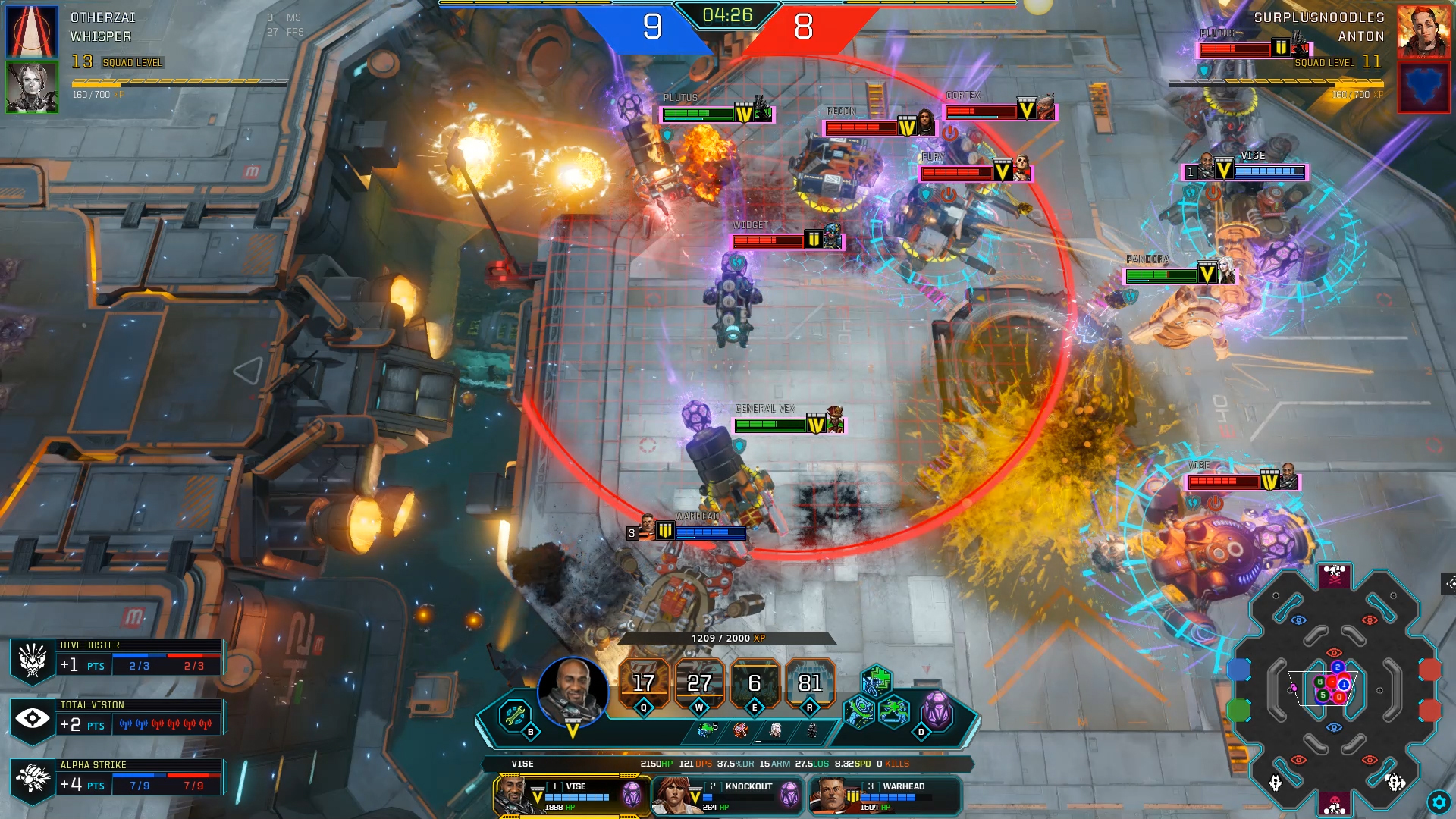
At first glance, a lot of RTS fans might write off Dropzone as Yet Another Damn MOBA. That might be understandable, but it would also be a damn shame. Yes, Dropzone has all the essentials: small PvP matches, three standard-issue lanes, F2P structure, and lots of quirky characters. While it has learned a lot about accessibility, balance, and competition from the massive array of MOBAs out there, Dropzone is actually an RTS that owes a lot more to Command & Conquer than to DOTA.
The first interesting idea here is that Dropzone isn't a battle or an invasion, it's a sport. Matches are exactly 15 minutes long, and the winner is the team that can score the most points in that time. In video game–world a timed match like that almost feels wrong, but it makes perfect sense in sports-world, it makes perfect sense. After all, the NBA plays until the clock runs down, not until the losing team has all been killed.

Each team in this sport is made up of three mech-driving pilots chosen from four classes. This is where the first hints of a broader meta-game start to sneak in: You need a Tank and a Gunner probably, but should you also recruit a Mechanic for repairs? Or should you bring a Summoner and push offense?
Whether those three pilots are controlled by you and two friends, or by you alone, depends on the mode. Newer players should earn their training wheels by controlling a single pilot at a time, very much in the MOBA style. Players need to be paying attention so they can trigger special abilities, level up their characters, and kite mobs. As the skill levels ramp up, though, the heart of Dropzone's competitive scene will most likely be its frantic one-on-one game mode that feels like a fast-moving RTS. All of those special abilities and kiting maneuvers still have to be done, but now players juggle three different fights at once.

The big change from more traditional RTS structure is the split between micro- and macro-management: there's no base-building in Dropzone. Though I love a good-looking base, I have to admit that base-building is one of the big reasons why I never really followed competitive Starcraft. I always felt that most of the big decisions were made months ago when those players decided on their perfect build orders. Dropzone's battles are more about the moment-to-moment tactics, surprise, and improvisation, and that feels fresh and exciting to me.
There may not be bases to obsess over, but each pilot and rig comes with a lot of customization choices to sort through and coordinate. The wider team strategy is key here. It's one thing to build a rig that looks cool to you, but players have to think bigger. Having a devastating but slow power attack is all well and good, but having another pilot whose attack can trap enemies in one spot, leaving them vulnerable for the big knock-out punch? Combining gear, strategies, and skills with other pilots will separate good players from great ones.

It's not as sexy as discussing build strategies or marveling at the art style (Dropzone's cell-shaded mechanical art style is attractive, like Borderlands meets The Expanse), but we have to talk about some of the quality-of-life improvements Dropzone is bringing to matchmaking and group play. Players can form a persistent party with two other players to enter matchmaking, and that party can search for opponents across ranked and unmatched ladders and multiple game types at once. This kind of party and search dynamic was most prominently pioneered by Rocket League a couple of years ago, but it's lovely seeing it brought into the competitive RTS world, too.
Keep up to date with the most important stories and the best deals, as picked by the PC Gamer team.
I can already hear some RTS purists grumbling. But taken all-together, Dropzone's take on competitive RTSs could be what the genre needs to make spectating fun and esports tournaments viable. That kind of popularity is worth giving up a little base-building.
Sponsored by Dropzone

